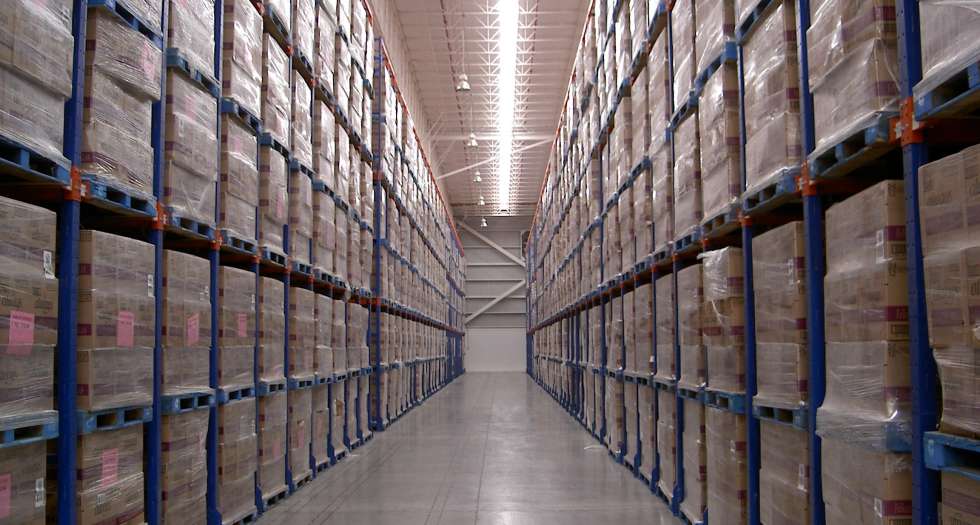People want more options, faster delivery and unlimited access to product. Traditional warehousing is equipped to move large amounts of the same product efficiently and cost effectively. This means a large shift in inventory management is underway to meet larger SKU counts and more diverse customer demand. The warehouse landscape is evolving to support omni-channel operations under one roof to meet fulfillment needs and to create a tighter, more efficient supply chain operation. Here are three directions inventory management is trending:
1) Maximizing Cubic Space – More demand, flavors and options means more and more SKUs for a warehouse to stock. This larger variation in product types benefits from less dense warehouse storage solutions that maximize access to product, selectivity and adjustability to changes in demand. Warehouses require quicker product turnover and access to a much larger inventory mix to meet customer demand with quicker delivery times than in recent years. Since customers are unwilling to wait as long for delivery, distribution operations must stock as many SKUs as possible, in the right amount to manage inventory levels on hand while maximizing product availability.
High density options for smaller inventory mixes is being left behind to make way for less dense static racking that is easily configured to any load size. This utilization trend of low density racking solutions means configuring distribution layouts in a way that maximizes accessibility while minimizing wasted aisle space. With the flexibility of static racking design, warehouses have a greater ability to adjust in real time to market demand while optimizing on hand inventory levels and accessibility. This means the layout and configuration must reflect specific throughput and storage density requirements.
2) Static Racking Solutions – Larger inventory mixes means more SKUs for a warehouse or distribution center to manage, access and move. Static racking such as single selective or double deep reach selective pallet storage provides accessibility, scalability and adjustability to an operation to support larger product mixes. Selective racking maximizes product accessibility and gives warehouses a greater capacity to stock more product, flavors and options than ever before. Higher density solutions such as pushback pallet racking are trending out because of an inability to diversify inventory flow. Selective rack is a cost-effective design allowing for the maximum number of SKU pick facings available in standard rack.
a warehouse or distribution center to manage, access and move. Static racking such as single selective or double deep reach selective pallet storage provides accessibility, scalability and adjustability to an operation to support larger product mixes. Selective racking maximizes product accessibility and gives warehouses a greater capacity to stock more product, flavors and options than ever before. Higher density solutions such as pushback pallet racking are trending out because of an inability to diversify inventory flow. Selective rack is a cost-effective design allowing for the maximum number of SKU pick facings available in standard rack.
This benefits distribution and fulfillment by providing access to larger and larger amounts of product and by delivering unmatched adjustability in the marketplace. Implementing very narrow aisles is another trend in 2019 warehouse design where the aisle spacing decreases to half the width of a regular aisle. One downside to narrow aisle implementation is that a special forklift is required but the cubic space savings can increase the number of pallet positions and the ability to scale to market demand in real time.
3) Automation – The proverbial newcomer to material handling. Automating storage and retrieval processes has many inherent distribution and fulfillment benefits. The biggest question keeping companies from automation is ROI. Does a warehouse get enough return on investment to sustain operation while implementing automated systems? Automation minimizes worker risk and is becoming a more viable option for warehouses to consider but the scalability is not quite there.
 Operational performance depends on unknown systems and the distribution landscape calls for customized operations depending on inventory needs and delivery capabilities. With scalable automation, warehouse managers can more effectively manage worker risk, safety and performance variables. As this technology becomes more scalable, fulfillment and distribution centers can implement automation into current processes, minimizing operational downtime and inventory risks.
Operational performance depends on unknown systems and the distribution landscape calls for customized operations depending on inventory needs and delivery capabilities. With scalable automation, warehouse managers can more effectively manage worker risk, safety and performance variables. As this technology becomes more scalable, fulfillment and distribution centers can implement automation into current processes, minimizing operational downtime and inventory risks.
Spiderman’s Uncle Ben once said, “With great power comes great responsibility” and in the case of distribution “with great amounts of inventory comes great need for accessibility and diversification”. Distribution centers must implement a flexible design that can adjust to changing market demand and delivery requirements. We can expect maximized warehouse footprints, static racking and automation to play a big part moving forward.

